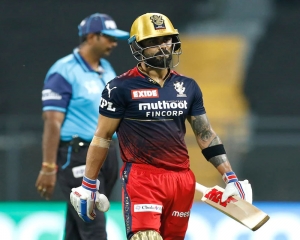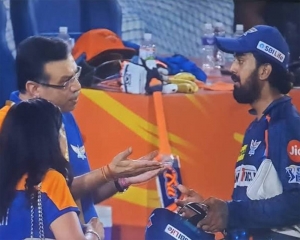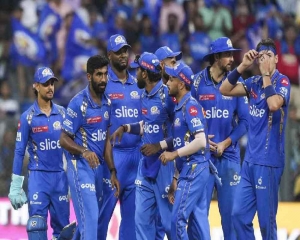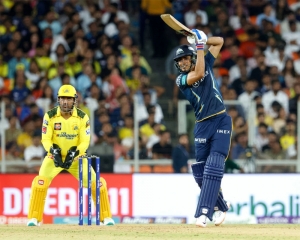Sumitranandan Pant, the “Bard of Almora” who sang of the beauty of nature in his poetry and was one of the shining names of the “Chhayavaadi Kavis” will always be the pride of Uttarakhand besides being one of the most well-known Hindi poets of our country In December 2015, the then Governor of Uttarakhand Dr.K.K.Paul released a memorial postage stamp on this renowned Hindi litterateur.
It was indeed a significant initiative to remember and honour the venerable tradition of literature that Uttarakhand is fortunate to posses. It was for the first time that a memorial stamp was issued in memory of any of the various eminent writers of this region.
This great poet’s death anniversary falls on December 28. He passed away in the year 1977.
Kausani and Almora in Kumaon in Uttarakhand are invariably associated with his name.
Tourists to the picturesque region love to visit the museum raised in his memory at Kausani. However, if the Government makes more efoorts to project his life and times, it would be a great tribute to this classic poet who has been often compared to William Wordsworth. Students in Uttarakhand must be made aware of this glorious literary heritage,
He was born more than a century ago at Kausani. Pant was one of the major romantic Hindi poets and Uttarakhand can never stop priding itself for having been the birthplace of such an accomplished poet.
Pant was born on May 20, 1900. His mother died within a few hours of his birth. He was given the name Gosain Dutt. His initial schooling took place in Almora. After completing high school, he moved to Prayag. He did not like his name so he gave himself a new name —”Sumitranandan Pant”.
He is considered one of the shining names of the Chhayavaadi School of Hindi literature, the others being Suryakant Tripathi Nirala, Jaishanker Prasad, Mahadevi Verma, Harivansh Rai Bachchan and Ram Dhari Singh Dinkar.
Chhayavaad (Shadowism) refers to the era of Neo –romanticism in Hindi Literature, particularly Hindi poetry (1917–1938) and was marked by an upsurge of romantic and humanist content. Chhayavaad was marked by a renewed sense of the self and personal expression, visible in the writings of that time. It is known for its leaning towards themes of love and nature. Sumitranandan Pant took to poetry when he was just seven, and happened to be studying in the 4th grade. Having spent his childhood surrounded by natural beauty of the mountains and flora and fauna; it was only natural that it was from here that he got his inspiration; for his earlier works reflected a sublime touch of the scenic serenity.
The period from 1907-1918 has even been admitted by Sumitranandan himself, as the first phase of his notable writing career. The poems that he wrote in this phase have been compiled together and published in "Veena" (1927).
Pant authored twenty eight published works including poetry, verse plays and essays. The Sumitranandan Pant Gallery is a museum in Kasauni, set in the house where the poet was born. The beauty of the hills where he was born echoes in Pant’s poetic works. After his early education in Almora, he went to Queen’s College in Kashi(Varanasi) and then to to Prayag University. On hearing Mahatama Gandhi’s call for Satyagraha, he left college. However, he continued his education by reading English, Sanskrit and Bengali Literature.
After some time, he went to Sri Aurobindo’s Ashram at Pondicherry. There was an undeniable influence after the visit to Sri Aurobindo's Ashram and the result was evident in the poems that he was writing then.
The museum at Kausani encloses manuscripts of his poems, draft copies of his literary works, articles of his day-to-day use, the awards received and also the letters written by him and received by him.
The compact library in this museum is worth visiting.
Pant was honoured with the prestigious Padma Bhushan (1961), Jnanpith (1968), Sahitya Akademi and Soviet Land-Nehru Awards for his immense contribution to the Hindi literary scene. His poetry epitomised the Indian thought of Satyam, Shivam, Sundaram (the true, the good, the beautiful). Pant was the poet who effortlessly made the transition from aesthetic mysticism to the temporal.
In his later writings, Pant the aesthete emerged as a thinker, philosopher and humanist. His finest work, by far, is “Pallav”, a collection of 32 poems written between 1918 and 1925.
It was Sumitranandan Pant, a close friend of Harivansh Rai Bachchan who happened to suggest the name for the two Bachchan brothers —Amitabh and Ajitabh. He was like a godfather figure for the two.
Here is an example of a few lines in the Chhayavad style, from Pant’s poem “ Almore ka Vasant “(Almora Spring):
Vidrum ou, markat kee chhaya,
Sone chaandee ka sooryatap;
Him parisal kee reshmee vaayu,
Shat ratnachhay kharg chitrit nabh!
(Coral and emerald shadesun's heat first gold then silver;snow mountain scent on silken breezes,a hundred jeweled birds painting the sky)

























